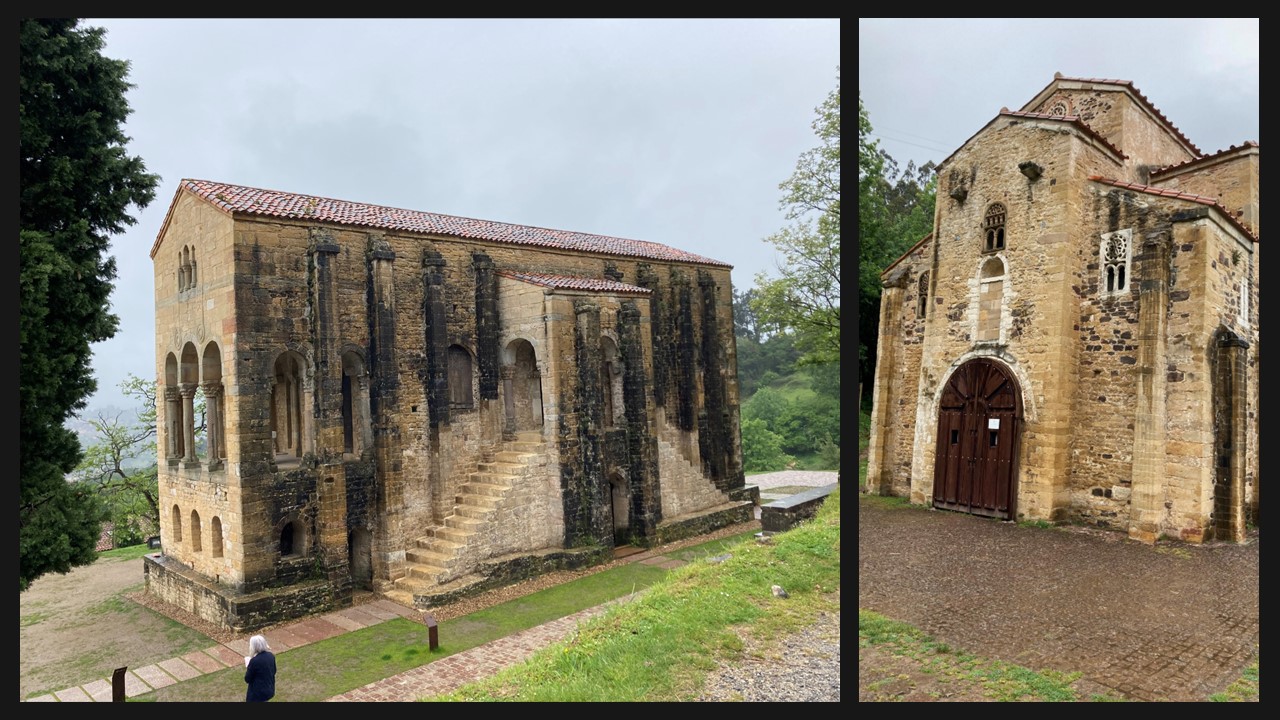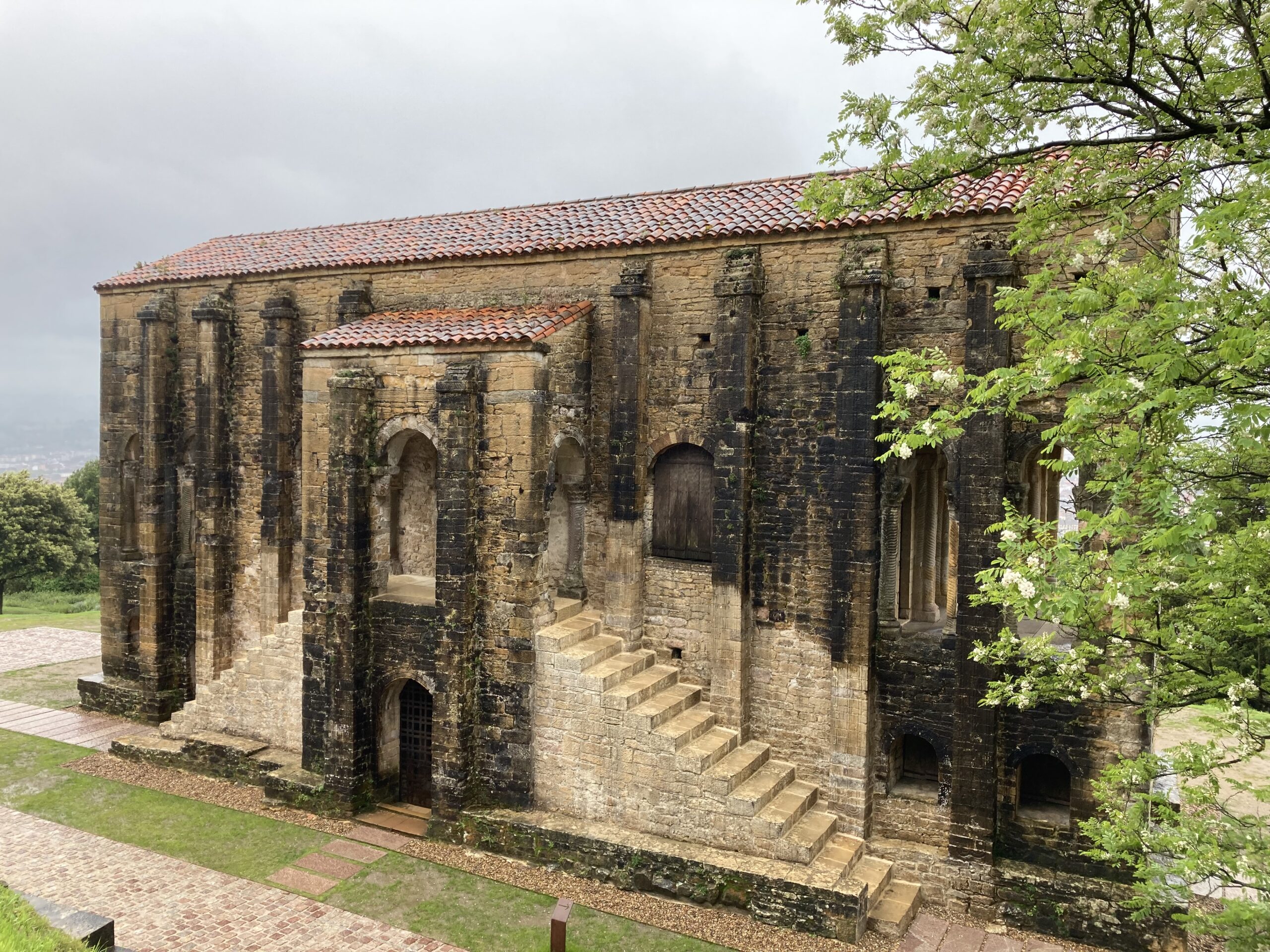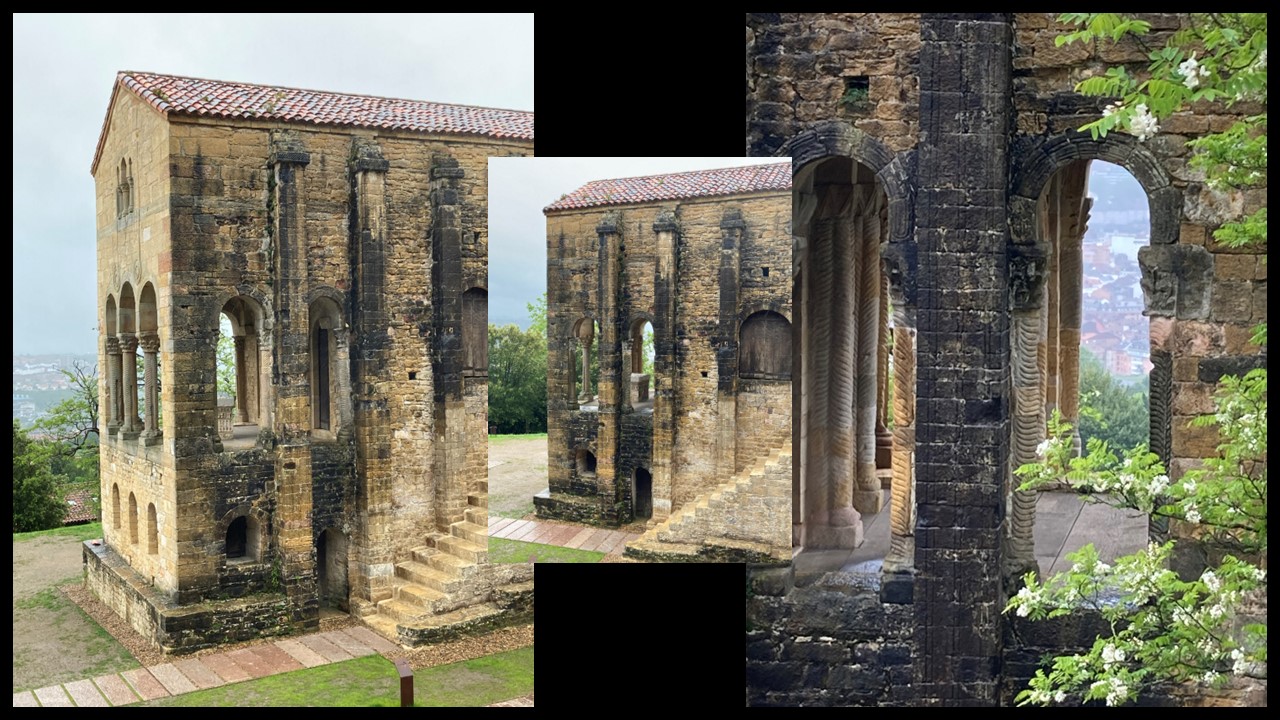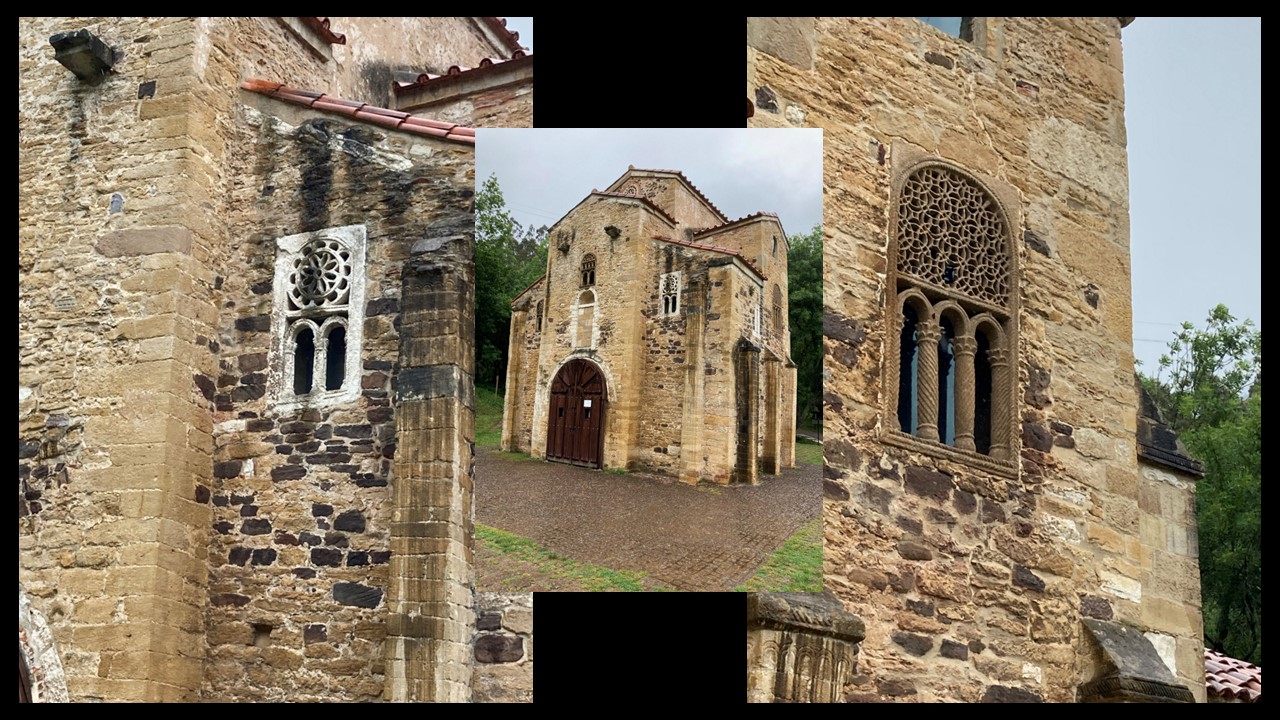
St. Michael of Lillo, completed in 842, Mount Nranco, Spain – Photo Credit: Amalia Spiliakou, May 2024
Nestled in the heart of Asturias, Spain, Mount Naranco stands as a majestic sentinel overlooking the vibrant city of Oviedo. This iconic mountain is not only a natural wonder but also a treasure trove of history and culture, boasting breathtaking views and ancient pre-Romanesque architecture. From the enchanting Palacio de Santa María del Naranco and San Miguel de Lillo churches to the lush, green trails that invite hikers and nature enthusiasts, Mount Naranco offers a unique blend of serenity and historical significance. This is a place where the past and present beautifully converge, offering a glimpse into the rich heritage and stunning landscapes of the Oviedo area.
Mount Naranco’s historical significance extends beyond its architectural marvels, which are deeply intertwined with the broader history of Asturias and Spain. This mountain has been a strategic vantage point and a symbol of resilience throughout the centuries. During the early medieval period, the area around Mount Naranco played a crucial role in the Christian Reconquista, serving as a stronghold for the Asturian Kingdom against Moorish invasions. The region witnessed numerous battles and skirmishes that were pivotal in the eventual reconquest of the Iberian Peninsula. Additionally, the mountain has long been a cultural and spiritual landmark, with its slopes and surrounding areas being integral to local folklore and traditions. Over the centuries, Mount Naranco has remained a symbol of the enduring spirit and historical legacy of the Asturian people, reflecting their role in the broader narrative of Spanish history.
The churches of Santa María del Naranco and San Miguel de Lillo on Mount Naranco near Oviedo, Spain, are remarkable examples of pre-Romanesque Asturian architecture, dating back to the 9th century. These historical structures, originally built within the Asturian Royal Complex, reflect the artistic and cultural achievements of the Asturian Kingdom.

Palacio de Santa María del Naranco, consecrated in 848, Mount Naranco, Spain – Photo Credit: Amalia Spiliakou, May 2024

Santa María del Naranco, completed in 848 AD, was part of the palace complex of King Ramiro I of Asturias. Initially serving as a royal hall and recreational pavilion, it was later consecrated as a church dedicated to the Virgin Mary. Located on the southern slopes of Mount Naranco, and facing Oviedo, this edifice exemplifies the sophisticated architectural and engineering skills of the Asturian Kingdom during the early medieval period. Over the centuries, the building has undergone various modifications and restorations, but it has retained its historical and cultural significance as a symbol of Asturian heritage.
The artistic qualities and characteristics of Santa María del Naranco are a testament to the ingenuity and aesthetic sensibilities of pre-Romanesque Asturian architecture. The building features a rectangular plan with a two-story design, incorporating intricate barrel vaults and ribbed arches that highlight its structural sophistication. The exterior is adorned with elegantly carved stone reliefs and decorative elements, including animal motifs and geometric patterns. Inside, the refined use of space and light, coupled with the exquisite craftsmanship of the columns and capitals, creates a serene and harmonious atmosphere. The building’s elegant proportions and detailed ornamentation reflect a unique blend of Visigothic, Mozarabic, and Carolingian influences, making Santa María del Naranco a remarkable example of early medieval art and architecture.

San Miguel de Lillo, also constructed during the reign of King Ramiro I in the mid-9th century, was originally part of the same royal palace complex as Santa María del Naranco. This church, dedicated to Saint Michael, was intended to serve as a place of worship for the royal court. Though only about a third of the original structure has survived due to partial collapse, what remains continues to offer valuable insights into the architectural innovations and religious practices of the Asturian Kingdom. The church’s historical significance is underscored by its designation as a UNESCO World Heritage Site, reflecting its enduring importance in the region’s cultural and historical landscape.
The artistic qualities and characteristics of San Miguel de Lillo are distinct and noteworthy within the context of pre-Romanesque Asturian architecture. The church features a basilica plan with a central nave and two side aisles, separated by robust columns and arches. The remnants of the original structure reveal intricate stone carvings and reliefs, particularly around the doorways and capitals, depicting biblical scenes and symbolic motifs. Inside, the decorative use of stucco and frescoes, though largely faded, once added vibrant colour and spiritual narrative to the space. The craftsmanship evident in the surviving portions, such as the lattice windows and sculpted figures, showcases a blend of Visigothic and Mozarabic artistic influences, underscoring the church’s role as both a religious and cultural monument of its time.
For a PowerPoint on Pre-Romanesque Church Architecture in Asturias including Palacio de Santa María del Naranco and San Miguel de Lillo, please… Check HERE!
Bibliography: https://en.asturias.com/the-Asturian-preromanic-from-oviedo/ and https://www.packing-up-the-pieces.com/churches-monte-naranco-oviedo/